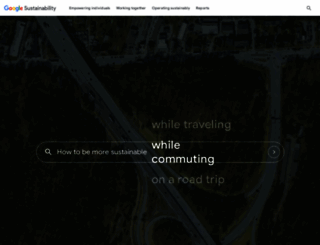Sustainable Innovation & Technology - Google Sustainability
Page Load Speed
1.6 sec in total
First Response
98 ms
Resources Loaded
639 ms
Page Rendered
873 ms

About Website
Click here to check amazing Environment content for United States. Otherwise, check out these important facts you probably never knew about environment.google
Explore how Google is driving sustainable innovation through technology to collectively create a greater sustainable impact for all.
Visit environment.googleKey Findings
We analyzed Environment.google page load time and found that the first response time was 98 ms and then it took 1.5 sec to load all DOM resources and completely render a web page. This is quite a good result, as only 30% of websites can load faster.